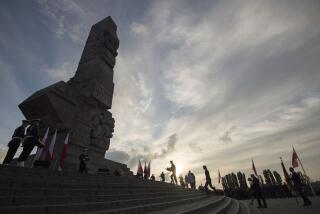Kosovo Civilians Massacred, Report Finds
- Share via
An independent forensic report into the killings of more than 40 ethnic Albanians in the Kosovo village of Racak in January has concluded that the victims were unarmed civilians executed in an organized massacre, some of them forced to kneel before being sprayed with bullets, according to Western sources familiar with the report.
The overall findings by Finnish forensic experts, set to be released today in Pristina, the Kosovo capital, contradict claims by officials of the Serb-led Yugoslav government that the dead were armed ethnic Albanian separatists or civilians accidentally caught in a cross-fire between government security forces and separatist rebels. Western officials have blamed the killings on government police.
Because of the extreme sensitivity of the case, leaders of the European Union, which sponsored the probe, have asked the forensic team to withhold some of its most potentially inflammatory findings, officials said.
The request, they say, was made out of concern that the results will impede the Belgrade government’s acceptance of a peace agreement for the Serbian province at talks underway in France.
The Jan. 15 killings at Racak, an ethnic Albanian village, outraged the international community and became a turning point in the yearlong conflict between security forces and the Kosovo Liberation Army, or KLA, the main ethnic Albanian rebel group fighting for Kosovo’s independence from Serbia, the dominant republic in the Yugoslav federation.
NATO leaders condemned the killings at the time and renewed their threat to carry out airstrikes against Yugoslav military targets. Days later, both sides in the conflict agreed to take part in peace talks in France sponsored by the United States, Russia and four West European nations.
The forensic team’s investigation, based on an examination of the site and autopsies conducted jointly with Yugoslav government pathologists, determined that 22 of the victims were slain in a gully on the outskirts of Racak. The gully is so narrow that victims could only have been shot deliberately at close range, the sources said.
Although the bodies of some victims in the village were moved into homes or a mosque before international observers arrived, the forensic experts were able to determine where all but four of the 40 victims they had access to died. From the bullet wounds and other evidence--such as civilian clothing and possessions--the team found no reason to conclude that the victims were killed accidentally or were members of the KLA, the sources said.
More to Read
Sign up for Essential California
The most important California stories and recommendations in your inbox every morning.
You may occasionally receive promotional content from the Los Angeles Times.













